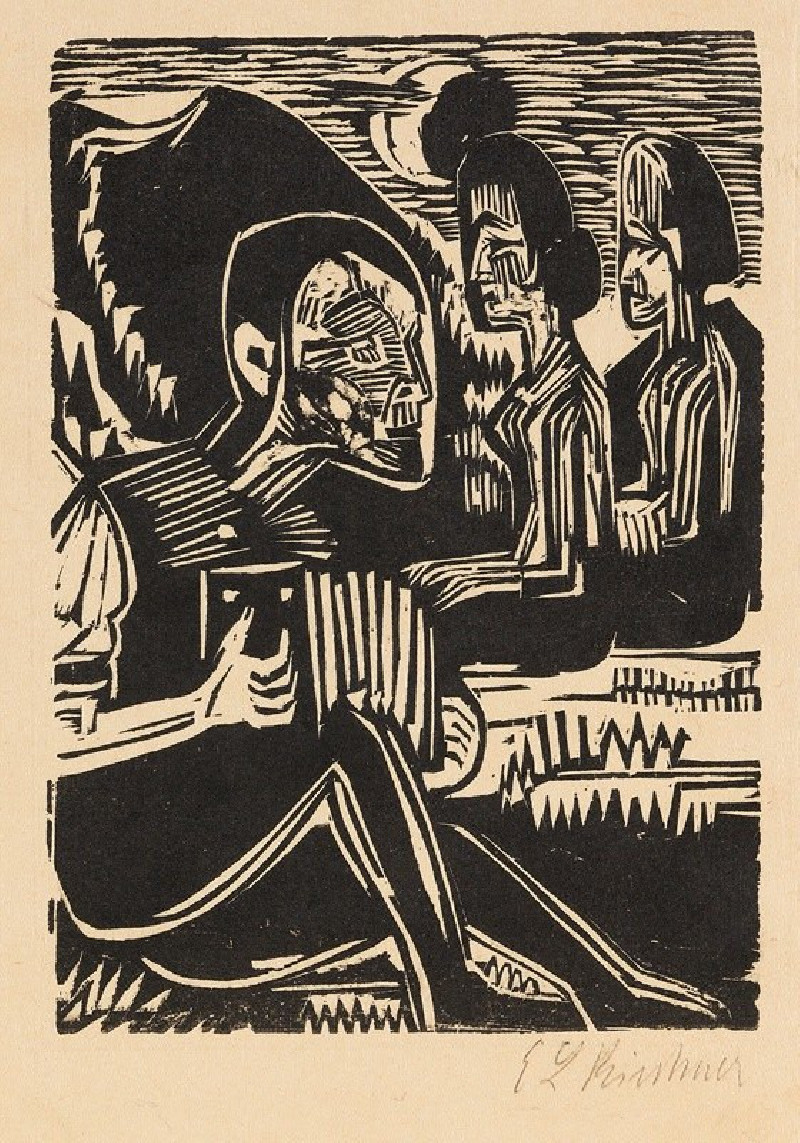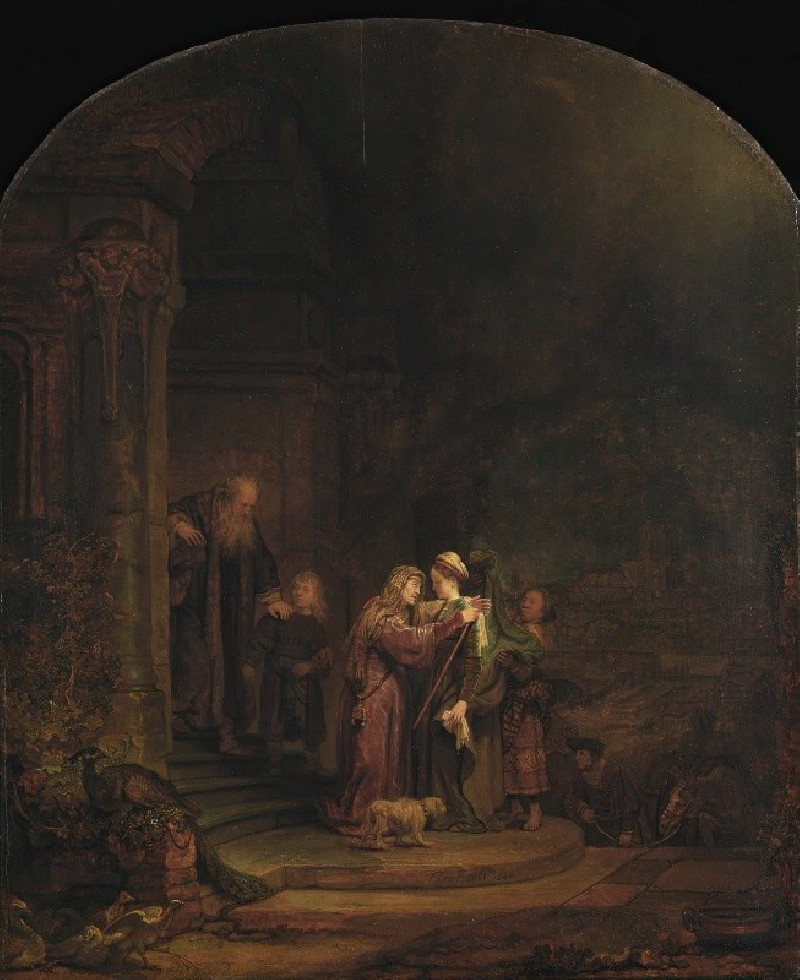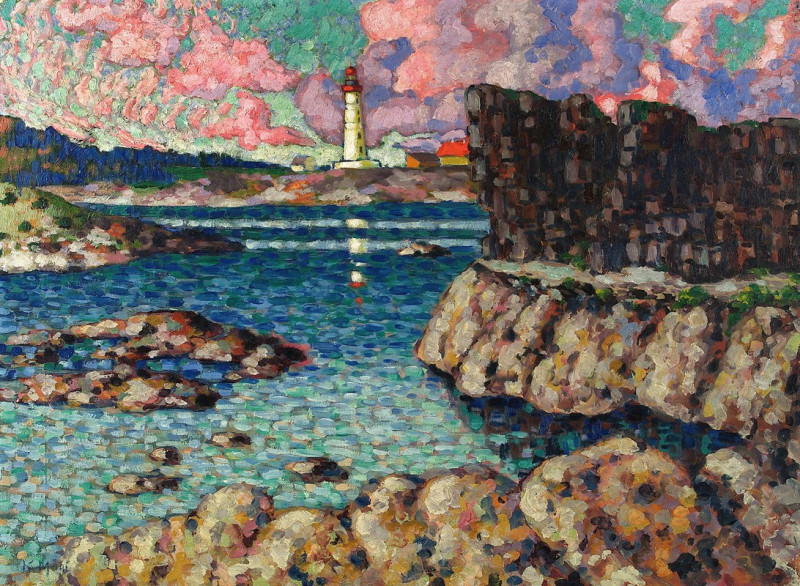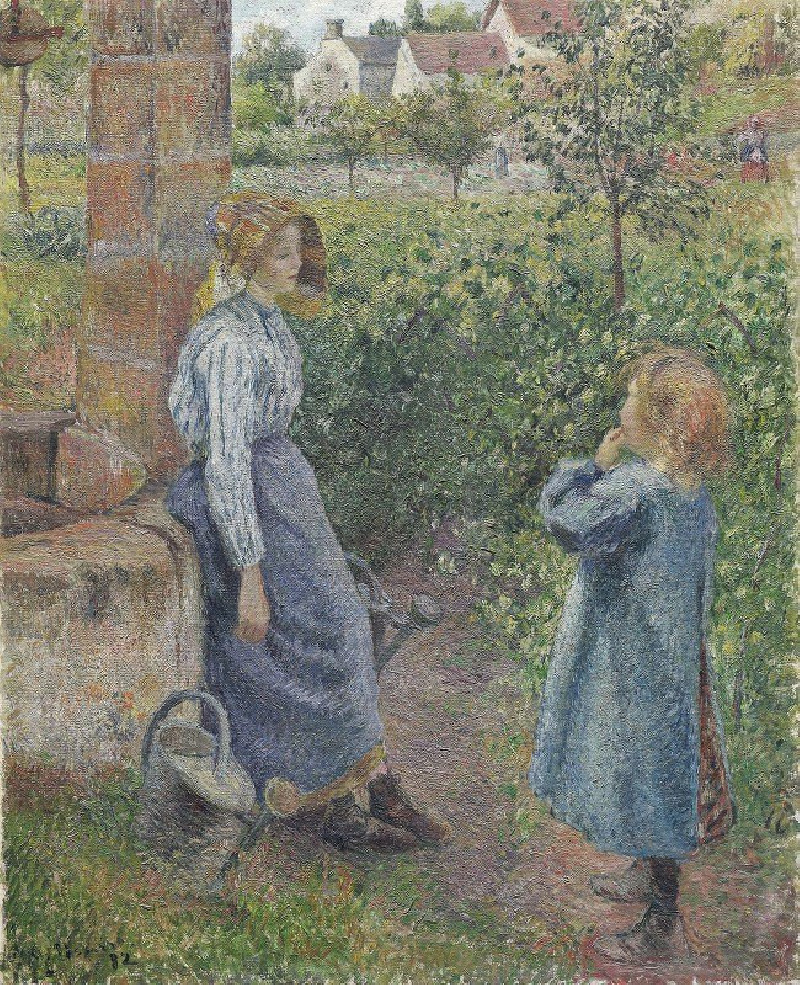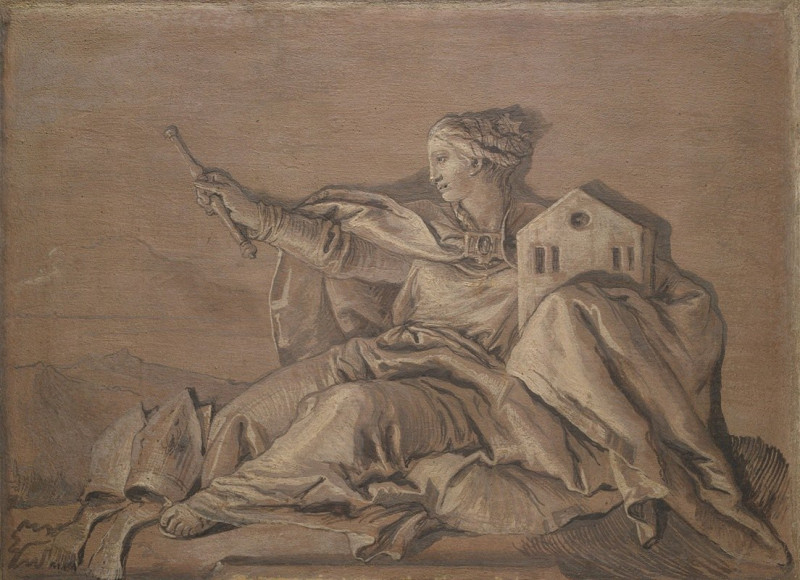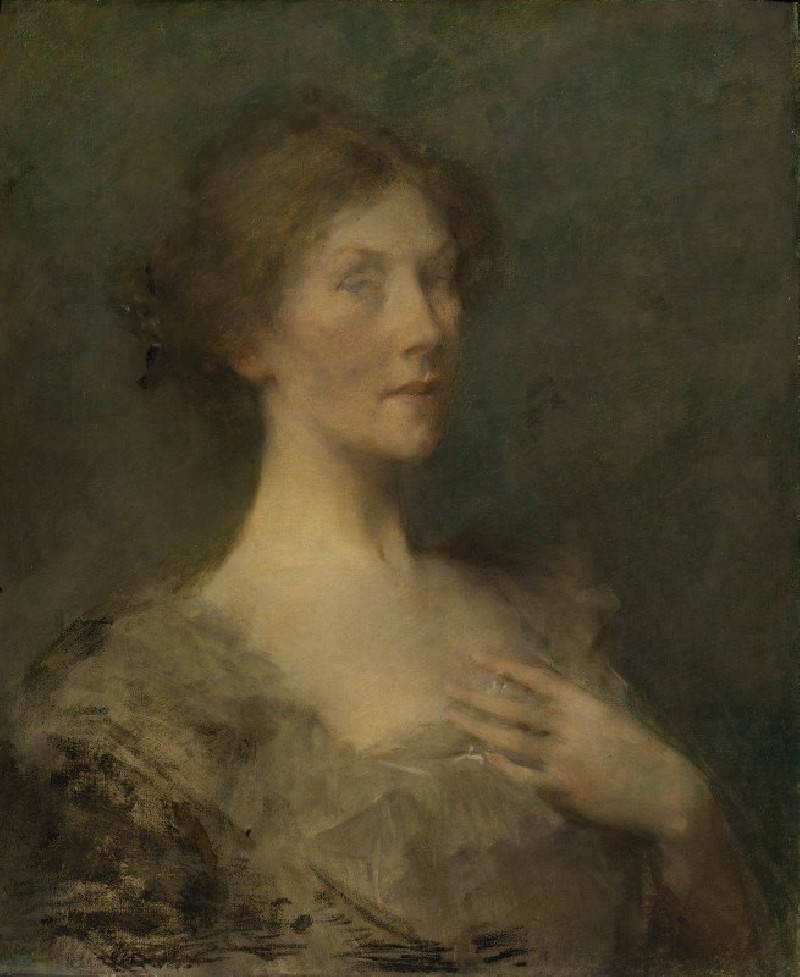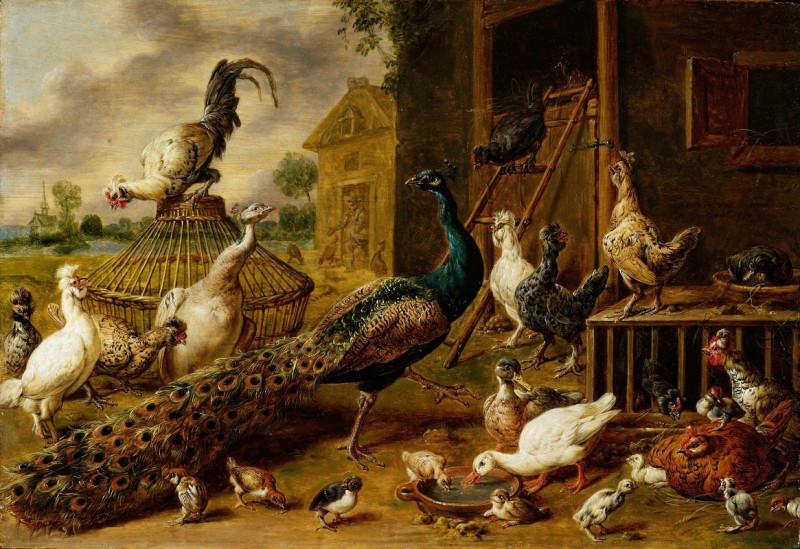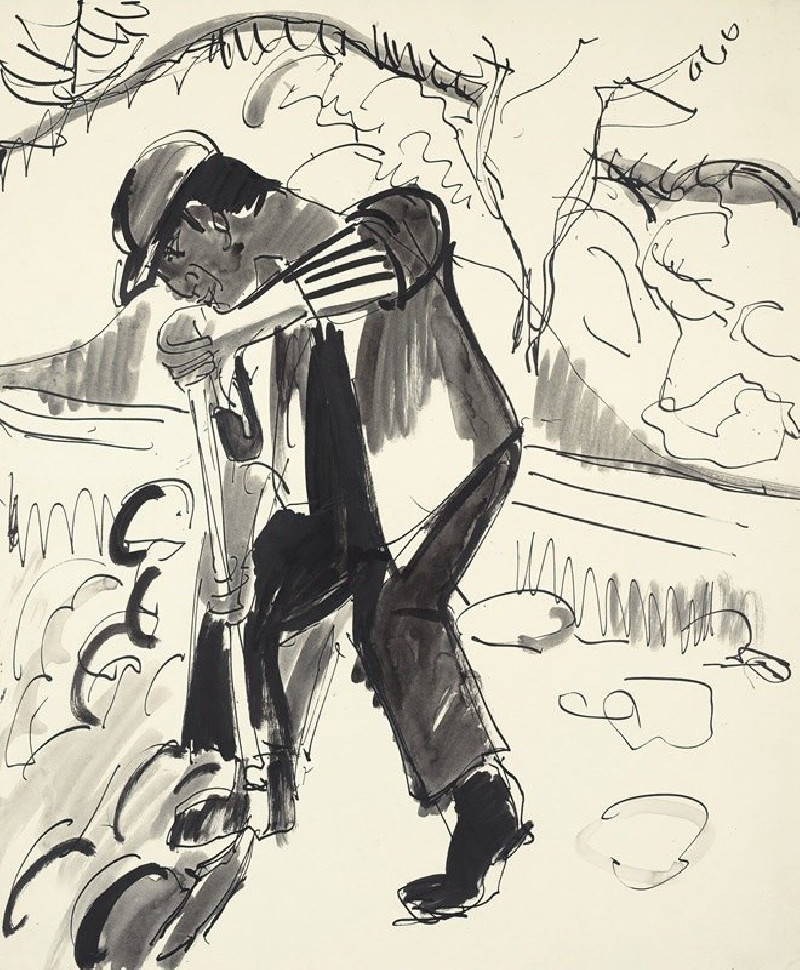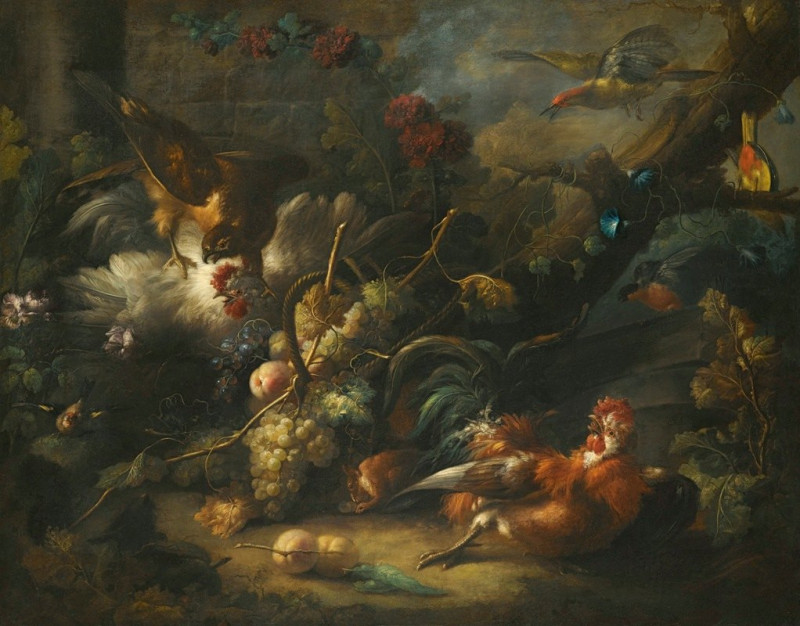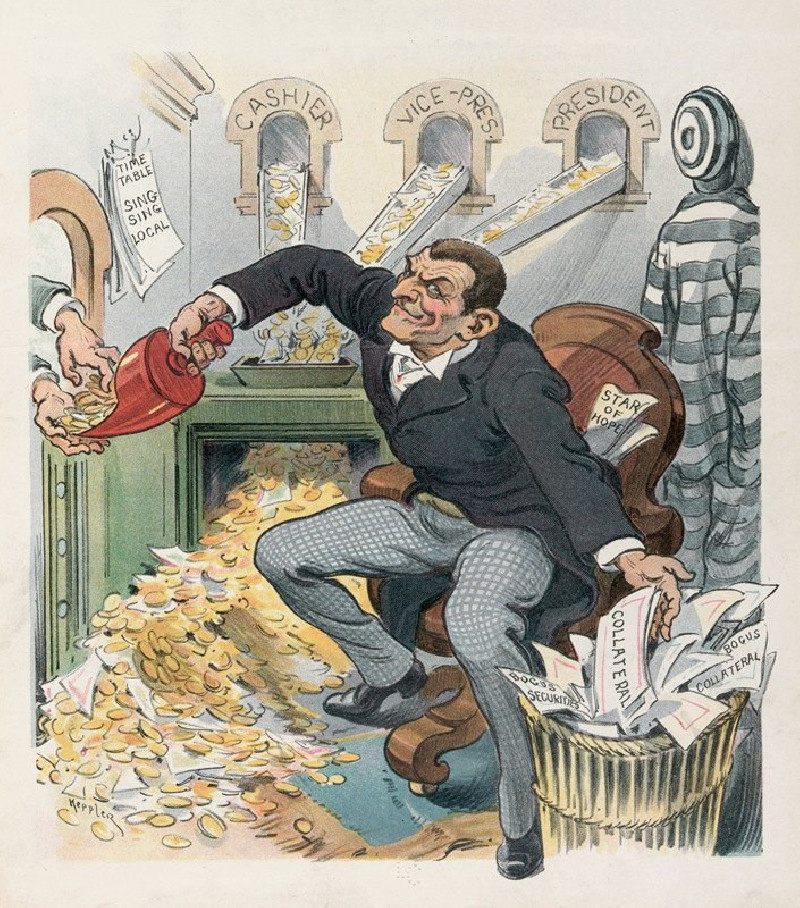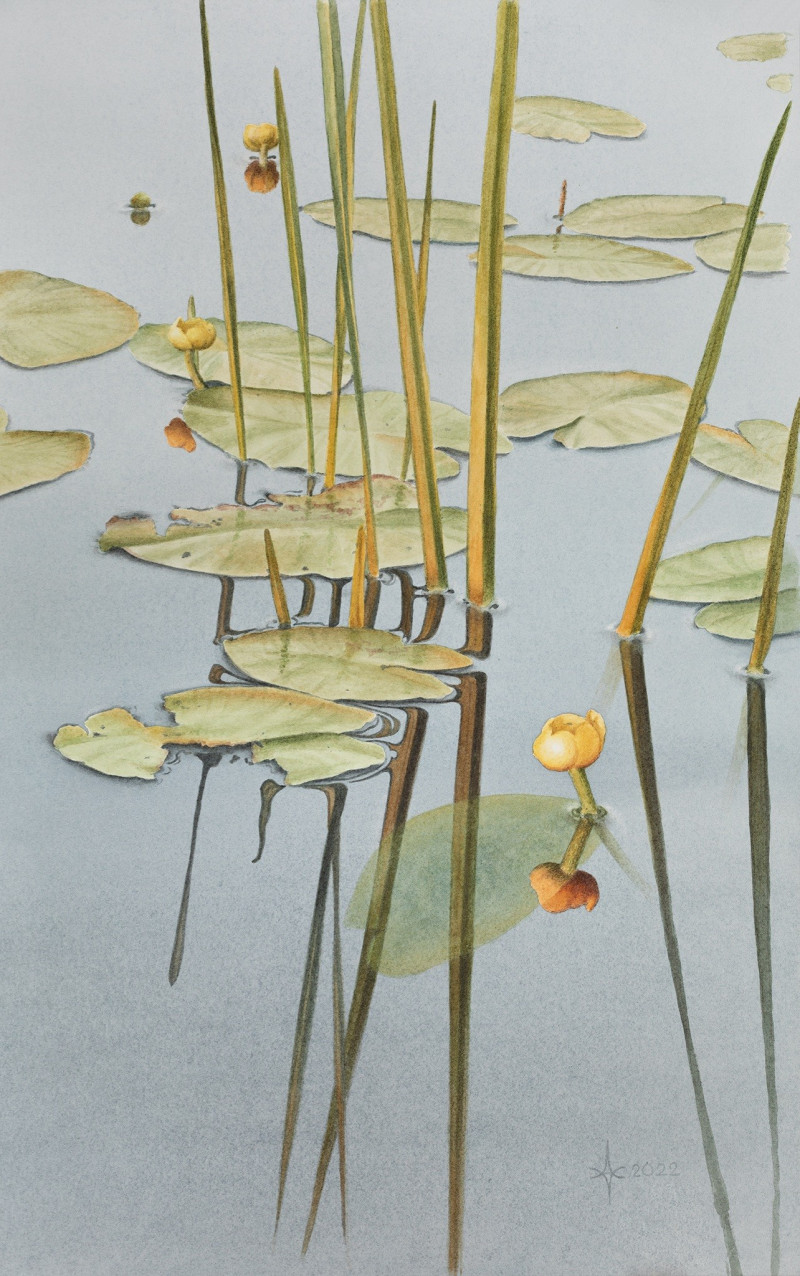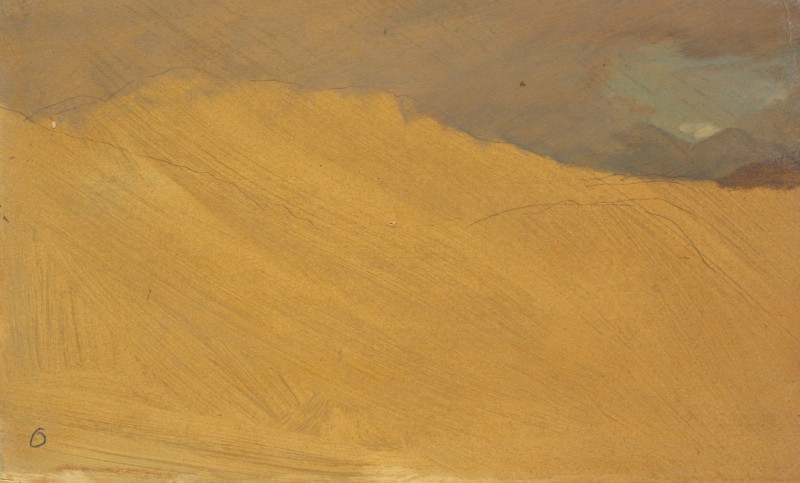Mondnacht (1924)
Technique: Giclée quality print
Recommended by our customers
More about this artwork
"Mondnacht," created in 1924 by the German expressionist artist Ernst Ludwig Kirchner, is a striking woodcut that showcases the artist's distinctive approach to form and emotional expression. The image features a dramatic and somewhat enigmatic scene, embodied by three figures set against a backdrop that seems both abstract and intensely structured.In the foreground, a seated figure dominates the composition, rendered with a mask-like face and pronounced features, suggesting a deep internal experience or reflection. This figure is flanked by two standing figures, their faces similarly stylized with sharp, angular lines, which may be indicative of Kirchner’s interest in non-Western forms and his attempts to convey psychological tension and complexity. The interaction—or lack thereof—between the figures adds a layer of mystery to the scene.The use of stark contrasts between the black and white areas intensifies the emotional impact of the work, a signature of Kirchner’s technique. These contrasts not only highlight the figures and their dramatic features but also contribute to the overall mood of the piece, which can be interpreted as somber and introspective.
Delivery
Returns
Ernst Ludwig Kirchner (1880–1938) was one of the most important German Expressionist painters. He was a co-founder of Die Brücke, a group of German expressionist artists formed in Dresden in 1905. Die Brücke and Kirchner took inspiration from Vincent Van Gogh and Edvard Munch, as well as African and Oceanic art. They used woodblock printing as a medium to showcase their signature style: flat, unrealistic images with vivid colors. The recurring themes in Kirchner's artworks included exotic cultures, faraway landscapes, self-portraits, dancers and Berlin street life. His paintings and prints effectively portrayed non-European cultures despite the fact that he never traveled outside of Europe.

